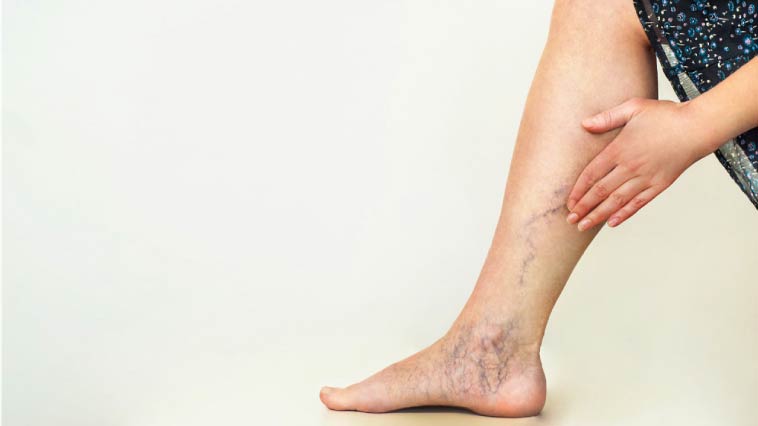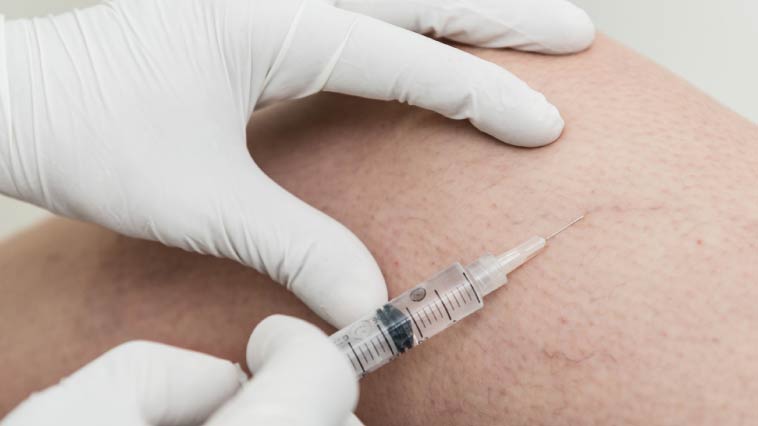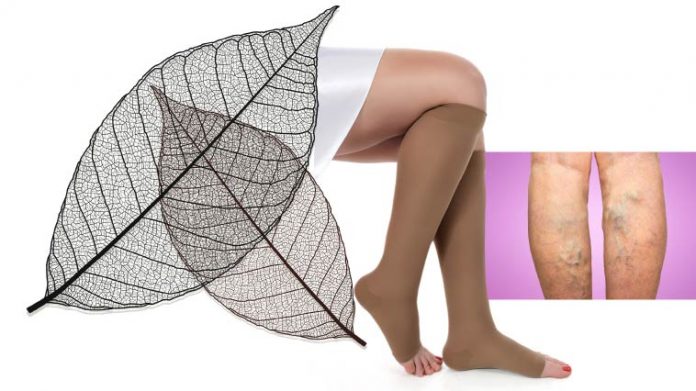You eye a perfect summer frock that’s on sale and make a beeline for it. But do you hesitate and put it back on the rack, thanks to those unsightly veins on your legs?
Whether it’s spider veins or the somewhat ugly varicose variety, if you’re stumped about how to deal with them, read on for what our experts have to say.
“Veins return oxygen-depleted blood from the rest of your body to your heart, so it can be recirculated,” says Dr Khanimana Mareschova, who specialises in vascular medicine at the American Mission Hospital in Manama. “To return blood to your heart, the veins in your legs must work against gravity. There are multiple one-way valves in them that help keep blood flowing toward your heart.”
 VARICOSE VEINS
VARICOSE VEINS
All is well until these valves become weak or damaged, and blood can back up and pool in your veins. This causes them to swell, get bigger and tortuous, leading to what is known as varicose veins.
“Varicose veins are abnormal, swollen blood vessels. Associated symptoms are swelling in the legs, itching and a change in colour of the skin, a feeling of heaviness in the legs, and pain,” says Dr Mareschova.
“Factors like older age, multiple pregnancies, a positive family history, obesity or a job that requires long hours of standing increase your risk of developing varicose veins.”
As per the statistics available from the region, she estimates that every other female over 40 years of age suffers from some form of chronic venous insufficiency (CHVI), and the situation among male patients is also alarming.
This is not considered a very grave, debilitating disorder. But, if left untreated, CHVI can progress to painful ulcers, particularly near the ankles, says Dr Mareschova. “Ulcers are caused by long-term fluid build-up in these tissues, caused by increased pressure of blood within the affected veins. They often get infected and are very difficult to treat.
“Occasionally, veins deep within the legs become enlarged and the affected leg may swell considerably. Any such sudden swelling needs to be examined because it may indicate a blood clot – a condition that needs immediate medical attention.”
Depending on their size and location, varicose veins can be treated with injections (sclerotherapy), a key-hole procedure using a catheter or a minor surgery. A combination of these is often used, she explains.
She further elaborates: “A newer treatment involves inserting a long, thin catheter that emits energy – most commonly heat. The released energy collapses and scleroses [hardens] the vein. As the catheter is pulled out, the vein lumen [the hollow passageway through which blood flows] collapses. This procedure is usually performed via local anaesthesia in combination with sedation, where only the area around the vein is numbed. The patient can go home the same day.”
 The average cost of removal of varicose veins depends on the location and extent of the condition, and the technique of treatment chosen. The success rate of the results, however, is very high.
The average cost of removal of varicose veins depends on the location and extent of the condition, and the technique of treatment chosen. The success rate of the results, however, is very high.
Dr Mareschova says: “There’s no way to completely prevent varicose veins. However, improving your circulation and muscle tone can reduce your risk of developing them.”
How to Keep Your Pins Perfect
- Exercise regularly
- Watch your weight
- Eat a high-fibre, low-salt diet
- Avoid high-heeled shoes and tight-fitting clothes (whenever possible)
- Elevate your legs while sitting and sleeping
- Change your sitting or standing position regularly
- In established cases of venous insufficiency, graduated pressure stockings should be worn.

Any vein can become varicose, but the ones in your legs and feet are most commonly affected as standing and walking upright puts increased pressure on the veins of your lower body.
SPIDER VEINS
Another condition of the blood vessels is telangiectasia, commonly referred to as spider veins for their fine, web-like appearance. They are clusters of small red, purple and blue blood vessels. They develop close to the surface of the skin and are typically seen on the legs and face, says Dr Salil Bharadwaj, who is a plastic, cosmetic and reconstructive surgery consultant at the Bahrain Specialist Hospital. “Like varicose veins, spider veins are the visible manifestations of an underlying problem with reverse venous flow,” he says.
Dr Bharadwaj cites the predisposing factors of the problem to include heredity, one’s occupation (nurses, hair stylists, teachers, and factory workers are consistently standing), obesity, hormonal influences of pregnancy, puberty and menopause, as well as the use of birth control pills.
“Postmenopausal hormonal replacement, a history of blood clots and conditions that cause increased pressure in the abdomen, such as tumors, constipation and externally worn garments like girdles, are also causes,” he says. “Seventy per cent of those affected are women, thanks to hormonal factors.”
 Sclerotherapy and laser therapy are treatment options. “Sclerotherapy focuses on causing damage to the inner lining of the blood vessel by injecting it with a chemical solution that causes a blood clot that collapses, thickens or scars the venule. There’s usually no recovery time, although there may be some temporary exercise restrictions.
Sclerotherapy and laser therapy are treatment options. “Sclerotherapy focuses on causing damage to the inner lining of the blood vessel by injecting it with a chemical solution that causes a blood clot that collapses, thickens or scars the venule. There’s usually no recovery time, although there may be some temporary exercise restrictions.
“Laser therapy uses pulsed or intermittent pulsed laser that targets the widened vessel and seals it. This usually involves little pain and has a short recovery period.” Both these procedures are done in the outpatient clinic and give patients minimum discomfort, he says.
“Treatment costs vary from BD30 to BD150 per session. Patients may need multiple sessions for complete resolution in a particular area. However, spider veins can develop in new places in the future.”





































